These brown butter pecan scones are light and crispy and are filled with amazing melt-in-your-mouth flavor.
Drizzled with creamy vanilla icing they make the perfect fall breakfast or brunch treat.
Inspired by one of the best ice cream flavors, they are the perfect sidekick for a warm cup of coffee on a cold winter morning.
A good scone is one of my favorite breakfast treats. Here are a few other scone recipes: Ham and Cheese Sourdough Scones, Apple Pecan Scones, Sourdough Blueberry Thyme Scones, Sourdough Discard Scones.

Jump to:
Why You Will Love This Recipe
- These brown sugar pecan scones are light and flakey without being too dry.
- The vanilla icing adds just the right amount of sweetness to these delicious scones.
Ingredients

Scones
Butter: Butter adds flavor and helps to create a flakey scone. I prefer to use unsalted butter.
Flour: Use all-purpose flour.
Brown Sugar: Brown sugar creates a softer scone and adds caramel flavor.
Baking Powder and Baking Soda: Gives the scones lift and helps to create light and fluffy scones.
Cinnamon: Adds a subtle heat and tons of flavor.
Chopped Pecans: Feel free to substitute your favorite nuts. The nuts add a great crunchy texture to the scones.
Heavy Whipping Cream: Adds flavor and moisture.
Eggs: Eggs add flavor and give the scone structure.
Salt: Enhances the other flavors.
Vanilla Extract: Helps to enhance the other flavors.

Vanilla Icing
- Powdered Sugar
- Heavy Cream
- Vanilla Extract
- Kosher Salt
Equipment
Kitchen scale: Kitchen scales make baking faster and neater. Accuracy matters in baking. Scales are more precise than measuring cups. Too much flour or not enough sugar can dramatically change a recipe. The most accurate way to bake is to measure your ingredients by weight rather than volume.
A kitchen scale also reduces the number of dishes you will need to wash because you are measuring each ingredient directly from the container into the mixing bowl without the use of measuring cups.
This scale from OXO is the one I use after it was recommended by Alton Brown. What makes this scale great is the display pulls out to make viewing measurements easier when using a large bowl.
You could cut the butter into the dry ingredients using a pastry blender, but I prefer to use a food processor. It is much faster and creates a finer more even mixture. Just be careful to not overwork the dough.
Mixing Bowls: These are some of my favorite mixing bowls. They come in a huge range of sizes, nest together for easy storage, and are easy to clean.
Pastry Brush: I am partial to silicone pastry brushes because they are heat resistant and dishwasher safe. I like them over bristled brushes because I don't have to worry about them leaving stray bristles behind.
Directions
Scones
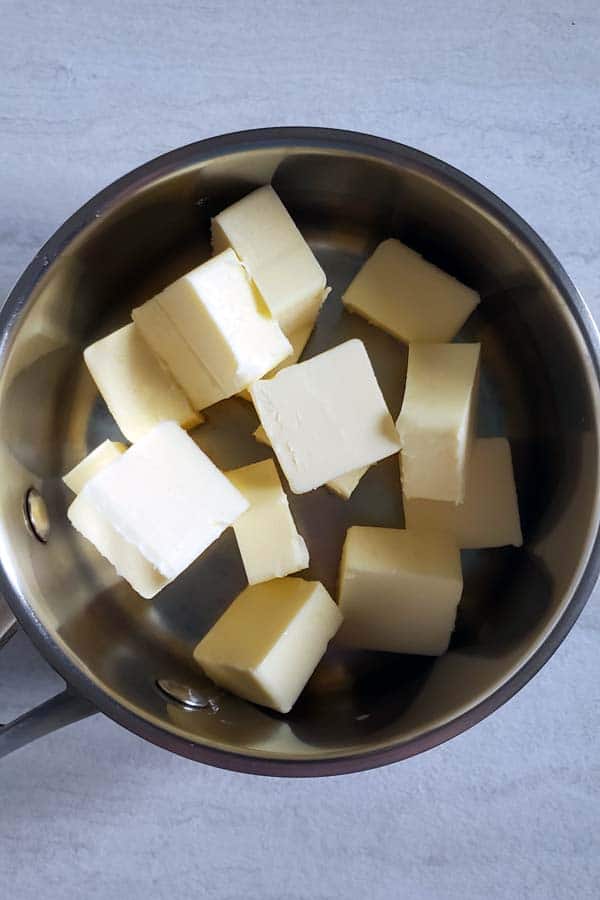

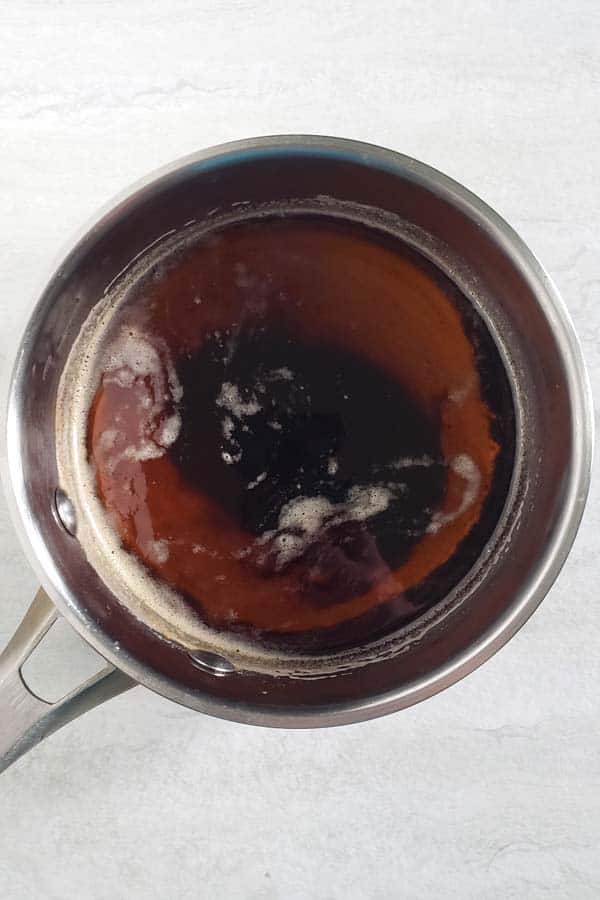
Brown the butter. Slice the butter into pieces and melt it in a light-colored skillet over medium heat whisking constantly. Once melted, the butter will begin to foam. Continue whisking for about 5-7 minutes, the butter will become a deep amber color.
Remove the browned butter from the heat, and pour it into a bowl. Cover and refrigerate until firm. This should take about four hours.
I often brown the butter the night before and refrigerate it overnight.
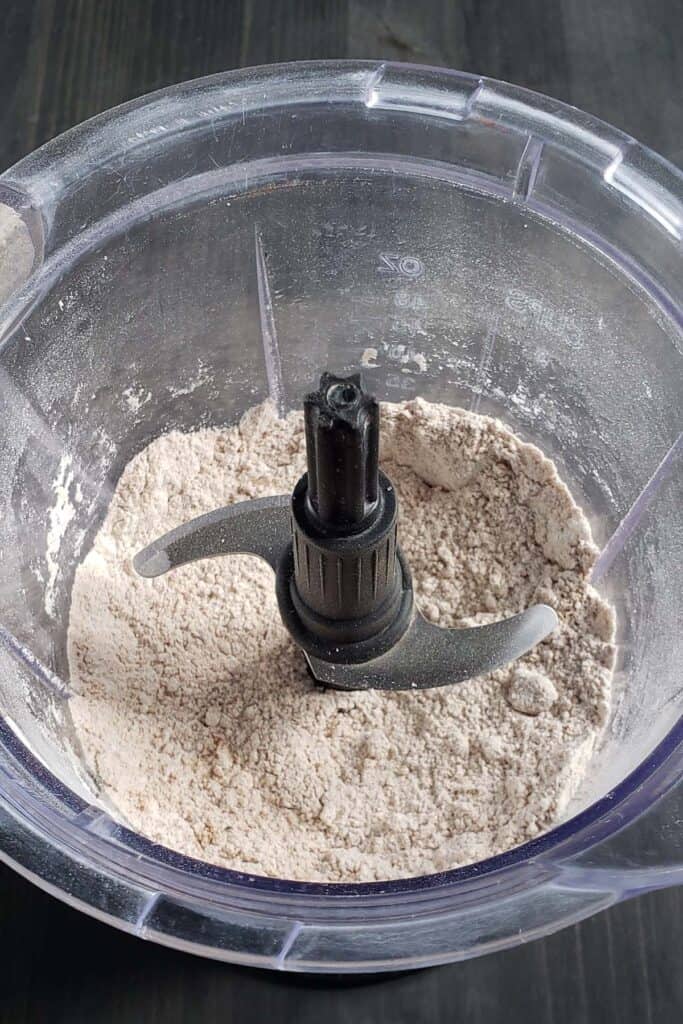

Mix the dry ingredients together. Combine flour, brown sugar, baking powder, cinnamon, salt, and baking soda in the bowl of your food processor.
Cut in the cold butter. Cut the butter into 4 pieces and add it to the flour mixture. Pulse a few times to chop and incorporate the butter into the dry ingredients.
Continue processing until the butter pieces are the size of peas. Stir in the chopped pecans.
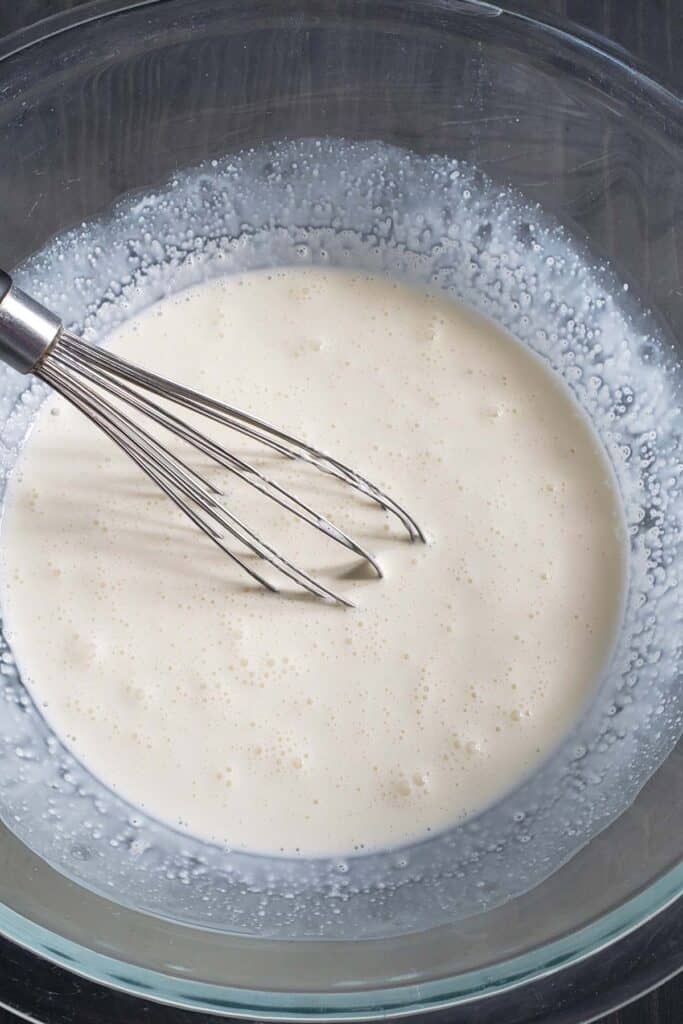

Whisk the wet ingredients together. In a large mixing bowl whisk together the heavy cream, egg, and vanilla.
Mix wet ingredients and dry ingredients. Pour the dry ingredients into the wet ingredients and fold them together being careful to not over mix.



Knead and shape the dough. Pour the dough onto a lightly floured surface. Knead the dough a few times until it begins to come together and smoothes out a bit. Press dough into a rectangle and fold it into thirds like you would a letter. Give the dough a quarter turn and repeat this flattening and folding process two more times.
A bench scraper may help you lift and fold the dough.
Pat into a disc approximately 1 inch thick and cut into eight wedges using a sharp knife.

Refrigerate for at least 30 minutes. Place scones on a parchment paper-lined baking sheet. To prevent the scones from spreading chill in the refrigerator for 30 minutes.
Preheat the oven. Preheat the oven to 425 degrees F.

Brush with heavy cream. Brushing the wedges of dough with heavy cream will encourage browning.
Bake until golden brown. Bake for 14-16 minutes.
Icing


Whisk all of the icing ingredients together in a small bowl. If necessary thin the icing with additional heavy cream until it is a smooth pouring consistency.
Once the scones have cooled, drizzle glaze across the tops of the scones and top them with additional chopped pecans before serving.
Tips
- A food processor makes blending the butter into the dry ingredients a million times easier. And allows you to work with colder butter without hurting your hands. Try putting the butter in the freezer for an hour before blending it into the dry ingredients. The texture of your scones will be even better.
- If you don't have a food processor, use a box grater to create small strips of butter that will be easier to cut into the flour with a pastry blender.
- If you don't have heavy cream, you can substitute milk or half and half.
- Don’t overwork the dough. Overworking the dough creates gluten which will result in chewy rather than flaky scones.
- Don't use a rolling pin. Pat the dough out with your hands to avoid overworking the dough.
- When cutting the scones, push straight down with the knife. Sawing back and forth with the knife will seal the edges together and will prevent them from rising.
- To help scones keep their shape, chill them in the refrigerator for at least 30 minutes before baking.
- Bake scones on parchment paper or a silicone mat to avoid overcooked bottoms.
- Baking times will vary depending upon your oven. It is helpful to know your oven and worth purchasing an inexpensive oven thermometer. Oven temperatures can vary as much as 50 degrees plus or minus.
Storage
Scones are best the day they are baked.
Leftover scones can be stored in an airtight container in the refrigerator for up to four days.
Freezing Scones
To freeze baked scones, let them cool to room temperature and then wrap tightly in plastic wrap and place in a zip-top bag labeled with the date and contents. Freeze scones for up to 3 months.
Thaw on the counter for a few hours, and then warm in the oven to get the best texture.
To freeze unbaked scones, cut the scones out and arrange them on a baking sheet lined with parchment paper. Freeze them until solid and then transfer them to a zip-top bag labeled with the date and contents. Scones can be frozen for up to 3 months.
To bake frozen scones, bake the scones directly from frozen adding an extra 2-3 minutes of baking time.
📖 Recipe

Light and Flakey Brown Butter Pecan Scones with Vanilla Drizzle
Equipment
- food processor or pastry blender
- mixing bowl
Ingredients
Scones
- 10 tablespoons unsalted butter
- 3 cups all-purpose flour
- ½ cup brown sugar
- 1 tablespoon baking powder
- 2 teaspoons cinnamon
- 1 teaspoon kosher salt
- ½ teaspoon baking soda
- ½ cup finely chopped pecans
- 1 cup heavy whipping cream
- 1 large egg
- 1 teaspoon vanilla extract
Icing
- 1 cup powdered sugar
- 3 tablespoons heavy cream
- ½ teaspoon vanilla extract
- pinch of kosher salt
Instructions
Scones
- Slice the 10 tablespoons unsalted butter into pieces and melt it in a light-colored skillet over medium heat whisking constantly. Once melted, the butter will begin to foam. Continue whisking for about 5-7 minutes, the butter will become a deep amber color. Remove the browned butter from the heat, and pour it into a bowl. Cover and refrigerate until firm. This should take about four hours. I often brown the butter the night before and refrigerate it overnight.
- Add the 3 cups all-purpose flour, ½ cup brown sugar, 1 tablespoon baking powder, 2 teaspoons cinnamon, 1 teaspoon kosher salt, and ½ teaspoon baking soda to the bowl of your food processor.
- Cut the chilled browned butter into 4 pieces and added it to the food processor. Pulse a few times to chop and incorporate the butter into the dry ingredients. Continue processing until the butter pieces are the size of peas. Stir in the ½ cup finely chopped pecans.
- In a large bowl whisk together the 1 cup heavy whipping cream, 1 large egg, and 1 teaspoon vanilla extract.
- Pour the dry ingredients into the wet ingredients and fold them together being careful to not over mix.
- Pour the dough onto a lightly floured counter. Knead the dough a few times until it begins to come together and smoothes out a bit. Flatten the dough and fold it into thirds like you would a letter. Give the dough a quarter turn and repeat this flattening and folding process two more times.
- Pat into a disc approximately 1 inch thick and cut into eight wedges using a sharp knife.
- Transfer the scones to a parchment paper-lined baking sheet. To prevent the scones from spreading chill in the refrigerator for 30 minutes.
- Preheat the oven to 425 degrees F.
- Brush the scones with heavy cream.
- Bake for 14-16 minutes until golden brown.
Icing
- Whisk 1 cup powdered sugar, 3 tablespoons heavy cream, ½ teaspoon vanilla extract, and pinch of kosher salt together in a small bowl. If necessary thin the icing with additional heavy cream until it is a smooth pouring consistency.
- Once the scones have cooled, drizzle with icing and top with additional chopped pecans before serving.
Notes
- To quickly chill the browned butter. Place the butter in the freezer for 30 to 60 minutes until solid.
- A food processor makes blending the butter into the dry ingredients a million times easier. And allows you to work with colder butter without hurting your hands.
- If you don’t have a food processor, use a box grater to create small strips of butter that will be easier to cut into the flour with a pastry blender.
- If you don’t have heavy cream, you can substitute milk or half and half.
- Don’t overwork the dough. Overworking the dough creates gluten which will result in chewy rather than flaky scones.
- Don’t use a rolling pin. Pat the dough out with your hands to avoid overworking the dough.
- When cutting the scones, push straight down with the knife to avoid sealing the edges together which will prevent them from rising,
- To help scones keep their shape, chill them in the refrigerator for at least 30 minutes before baking.
- Bake scones on parchment paper or a silicone mat to avoid overcooked bottoms.
- Baking times will vary depending upon your oven. It is helpful to know your oven and worth purchasing an inexpensive oven thermometer. Oven temperatures can vary as much as 50 degrees plus or minus.
- If the bottoms of the scones are browning too quickly slide a second baking sheet directly under.
Nutrition
More Breakfast Recipes
- Strawberry Oatmeal Pancakes
- Mango Blueberry Muffins
- Strawberry Banana Chocolate Smoothie
- Cinnamon and Spice Oatmeal



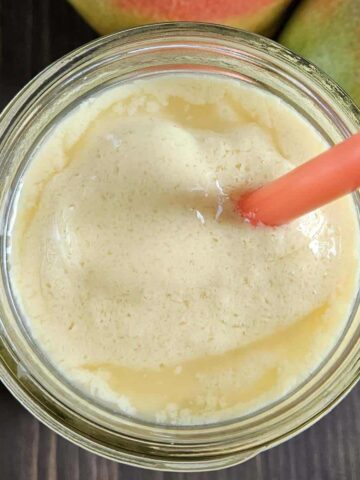

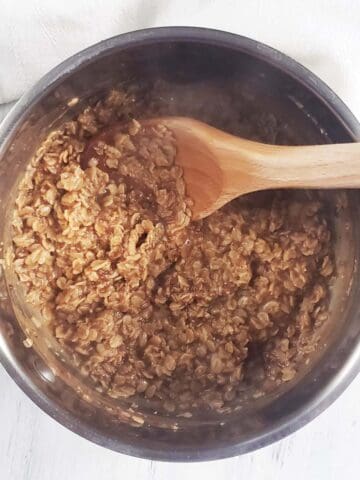
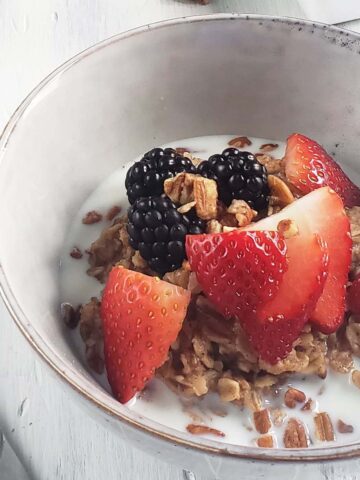
Comments
No Comments